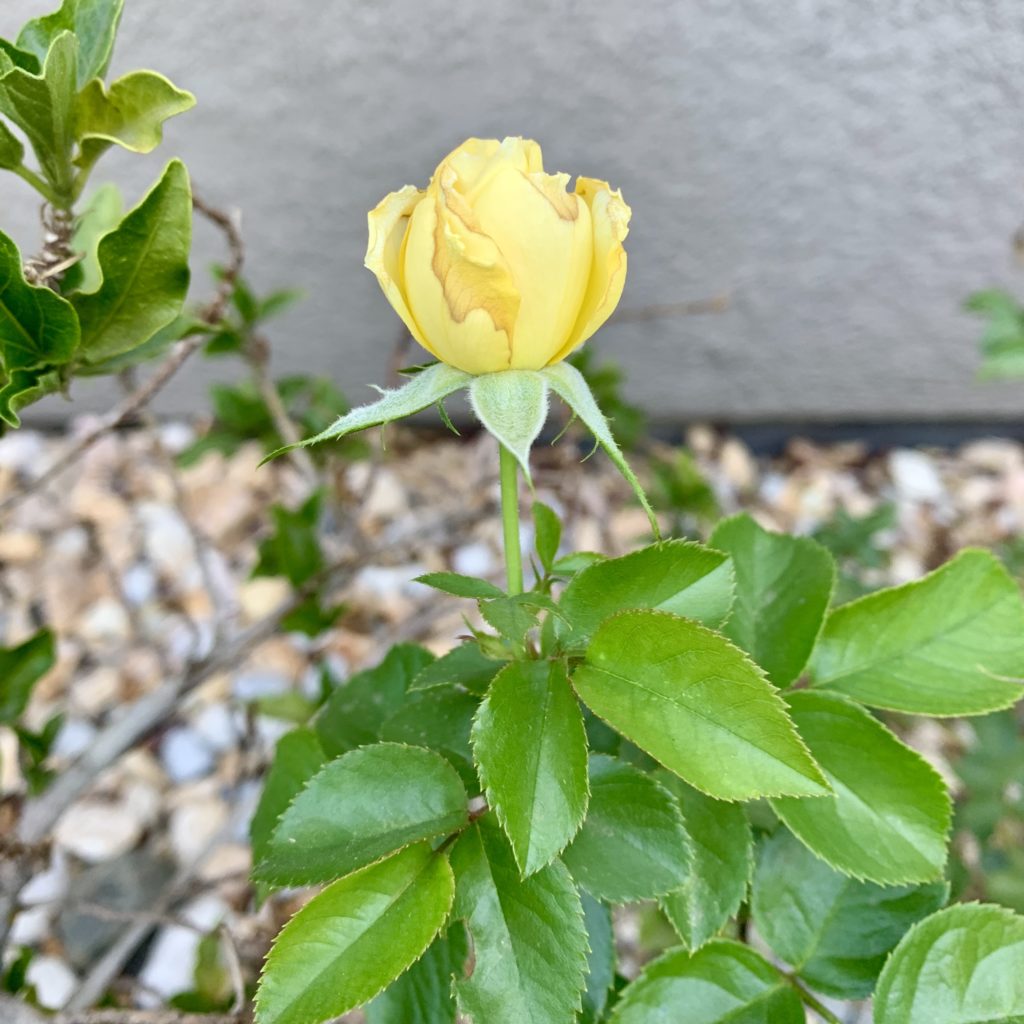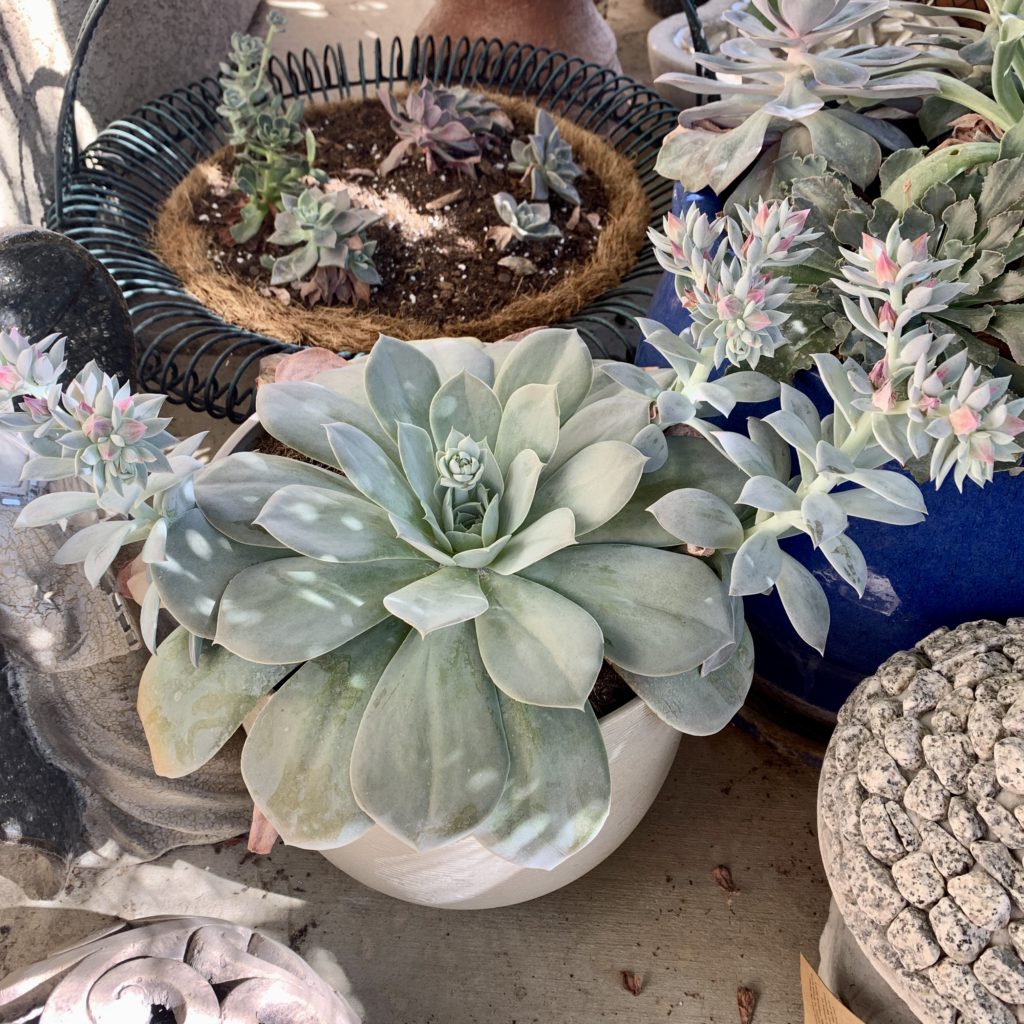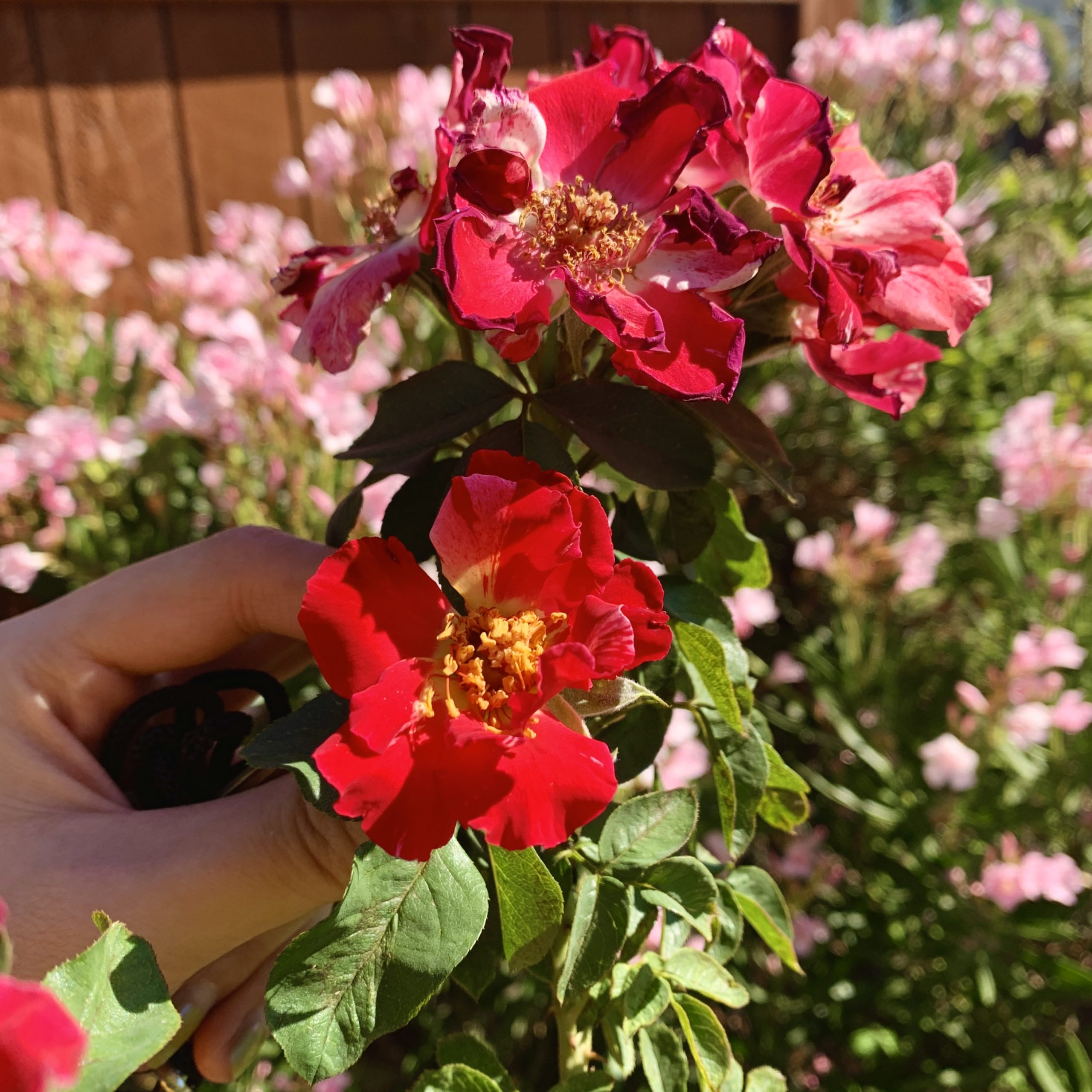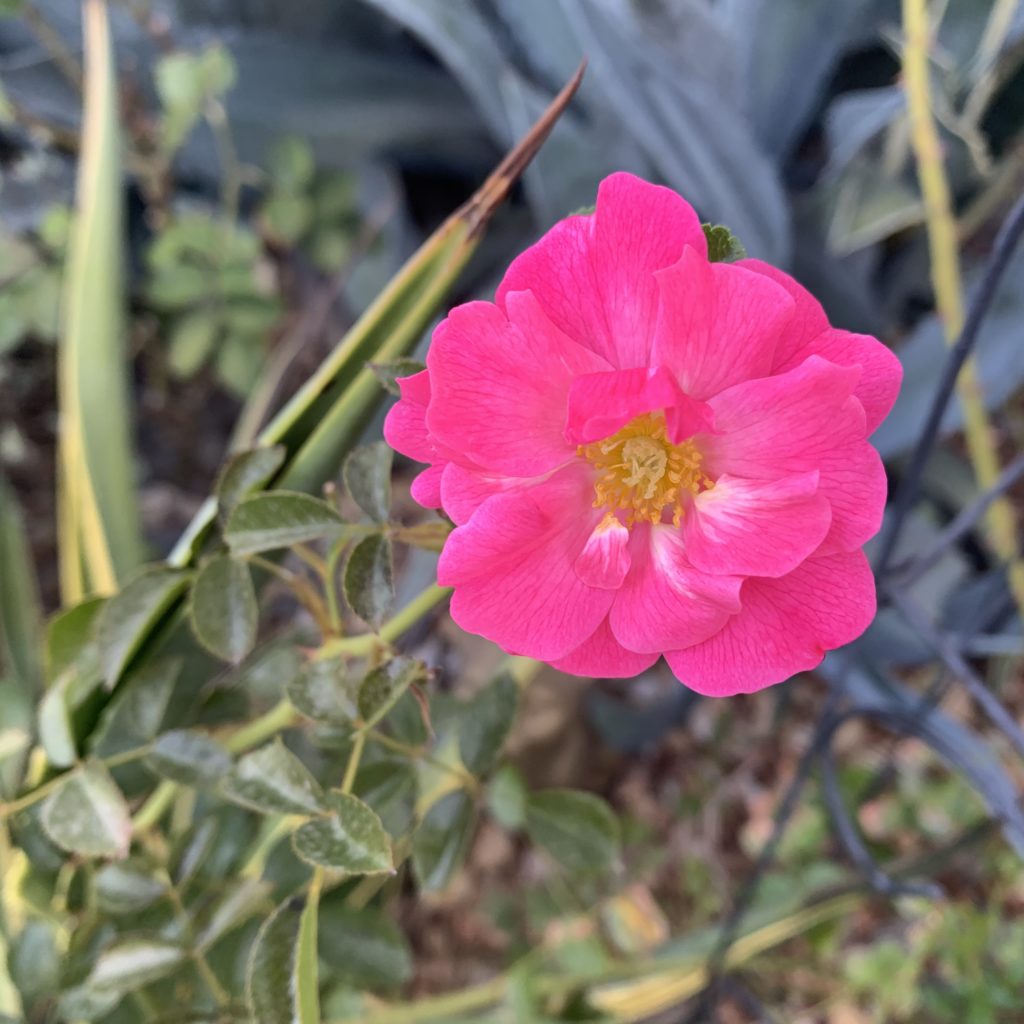Our summer days in the Central Valley are blisteringly hot; it feels like walking on coals whenever I venture out into my parents’ rock garden in nothing but a ratty pair of Old Navy sandals mid-afternoon. But early mornings — a few hours after dawn — and early evenings — right before the sun sets — lend some cool reprieve. They’re my favorite times of day to deadhead flowers and do light pruning on the flower bushes.
I actually find a lot of garden work tedious and only bearable with a great album blasting in my earbuds; my go-to recently has been Beyoncé’s Renaissance. I’m talking about sweeping debris and throwing away dead plants here. It’s really hard to glamorize these tasks no matter what angle I take.
What I’ll never get tired of is deadheading and pruning roses. Sure, it’s routine maintenance, but there’s also a creative and meditative magic that’s intertwined with this mundane task. Chalk it up to the Virgo in me, but I just love bringing order to chaos. Landscaping is such a quiet, fluid art form, and it deserves a little more love.
Why I love deadheading flowers
I’m really peak Virgo’s groove when I’m cutting down a rose bush. Deadheading flowers reminds me of editing a deliverable I’ve drafted up for my clients. The challenge here is how to turn an unwieldy, ugly mess into something pleasant to the eye. Instead of reigning in semi-coherent strings of sentences, it’s cutting away fading flowers and burnt, chewed up leaves — I’m telling you, it’s HOT in all caps here! But anyway, I find deadheading ten times more therapeutic than writing since it’s not tied to my self worth or livelihood. I can just make something pretty.
And the most wonderful thing in the world is seeing a new flower grow from a shoot after you’ve put in the labor to deadhead and prune. It’s a nice reminder that we can have our messy moments but put in the work to let our best shelves shine. Letting go of things in our lives that don’t work anymore can be a bittersweet process, but it’s an imperative part of growth.
Sorry, I just felt like talking in mug-worthy platitudes today.

How to deadhead flowers
The correct terminology for what I’ve been doing is “pruning,” but the principles are transferable to deadheading flowers. Essentially, the bloom cycle will come to an end. Your flowers will “get spent,” which is really to say that they will fade and look crumpled up and crisp and ugly. Roses will wither, and they can even go to seed and produce rose hip fruit if you don’t cut them down.

I also tend to cut off succulent flowers, no matter how pretty they are. I find that if I don’t cut these off, the plant spends its energy nourishing the flowers and leaving the fleshy stems and leaves looking rather sad.
Get your cutting tools.
Since I more so appreciate the aesthetics of blooms, I don’t want my bushes to start producing fruit or seeds. That’s when it’s time to get out the snippers or garden shears; I’ve used garden shears before but really just get by fine with scissors. You want to keep them clean so that they don’t transfer diseases to the wounds that you make on the stem. But I’m not out here wiping my scissors down with alcohol — I’ll just give them a power blast from the hose if they look grody.
Put on gloves
Another crucial part of working with flowers is a reliable pair of gloves. Some flowers, like the amaryllis, have toxic parts. Others, like roses, have really spiky thorns. I’ve gotten stabbed by rose thorns on multiple occasions even with gloves on, so I recommend investing in thick leather or heavy-duty synthetic gloves if you can. My cloth and faux leather ones from The Home Depot are protective for the most part, but I wouldn’t go for thin nitrile and cloth gloves. Don’t cheap out when it comes to protecting your hands!
Snip away
Now it’s time for the snippity snip. Some people actually just pinch off the flowers if the bud is fleshy enough. Personally, I find that doesn’t look as neat, and some flower petals are prone to crumbling apart and leaving behind a mess. If you go with cutting, the rule of thumb is to go in at a 45-degree angle to make a clean cut. Look for the first healthy set of five leaflets beneath the spent flower and snip above that. If you go above a set of three leaves, that stem area might turn weak.
This isn’t a hard and fast rule, though. A lot of my flower pruning this summer has been haphazard, mostly geared towards getting rid of severely burnt leaves. This means that I usually go down much lower than the first set of five leaflets and that I’m more focused on manicuring sections that are crossing over or posing hazards to casual pedestrians.
Anyway, remember to keep things tidy! After severing your rose branch, toss it in a bucket or basin that you can transfer to your yard waste or compost bin.
Much of deadheading is intuitive and just trusting the process. Sure, it helps to be strategic, but don’t be too hard on yourself. Put on Beyoncé, get rid of the ugly parts as you see fit, and enjoy the blooms as they come. You’ve got this, alien superstar.

